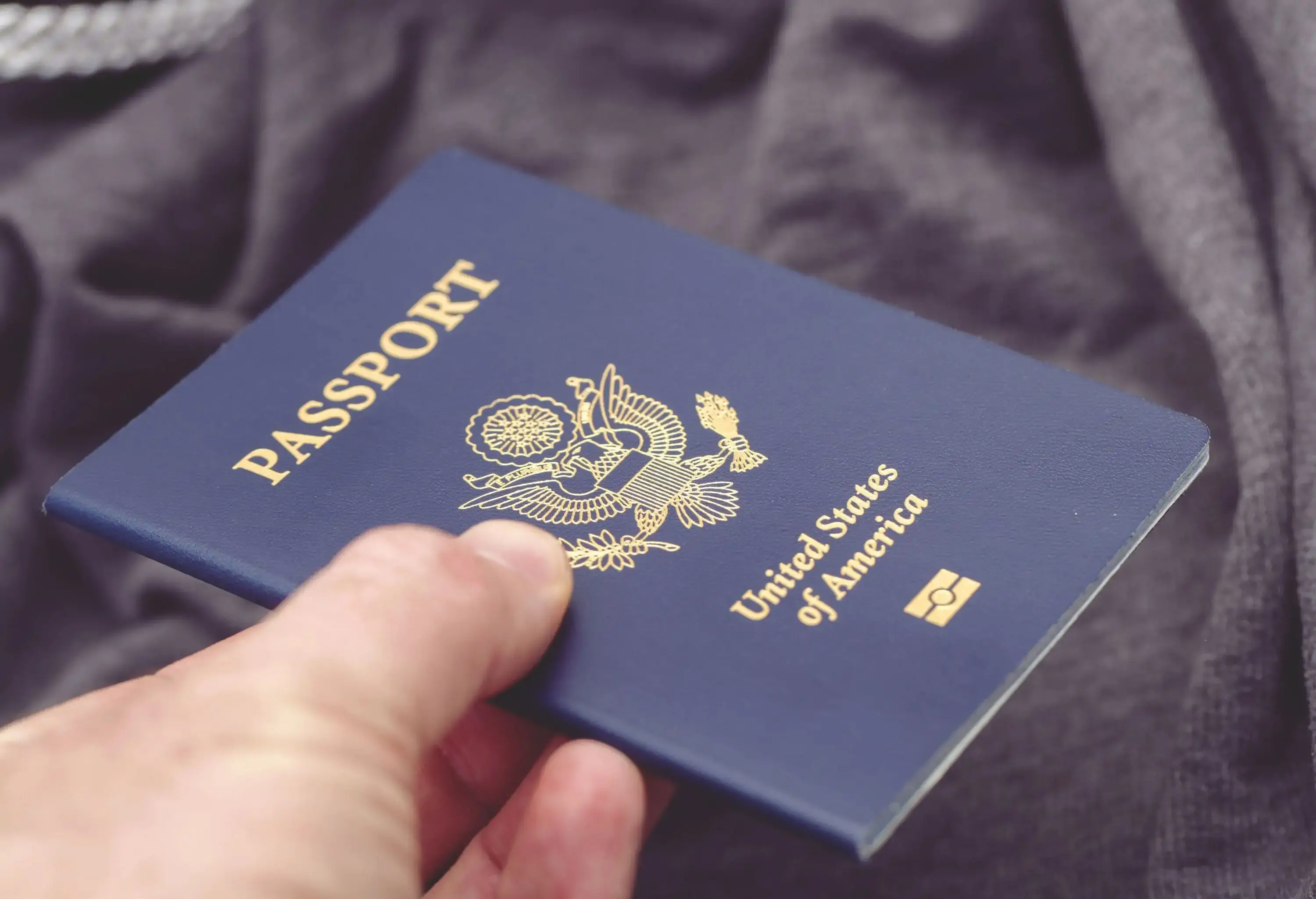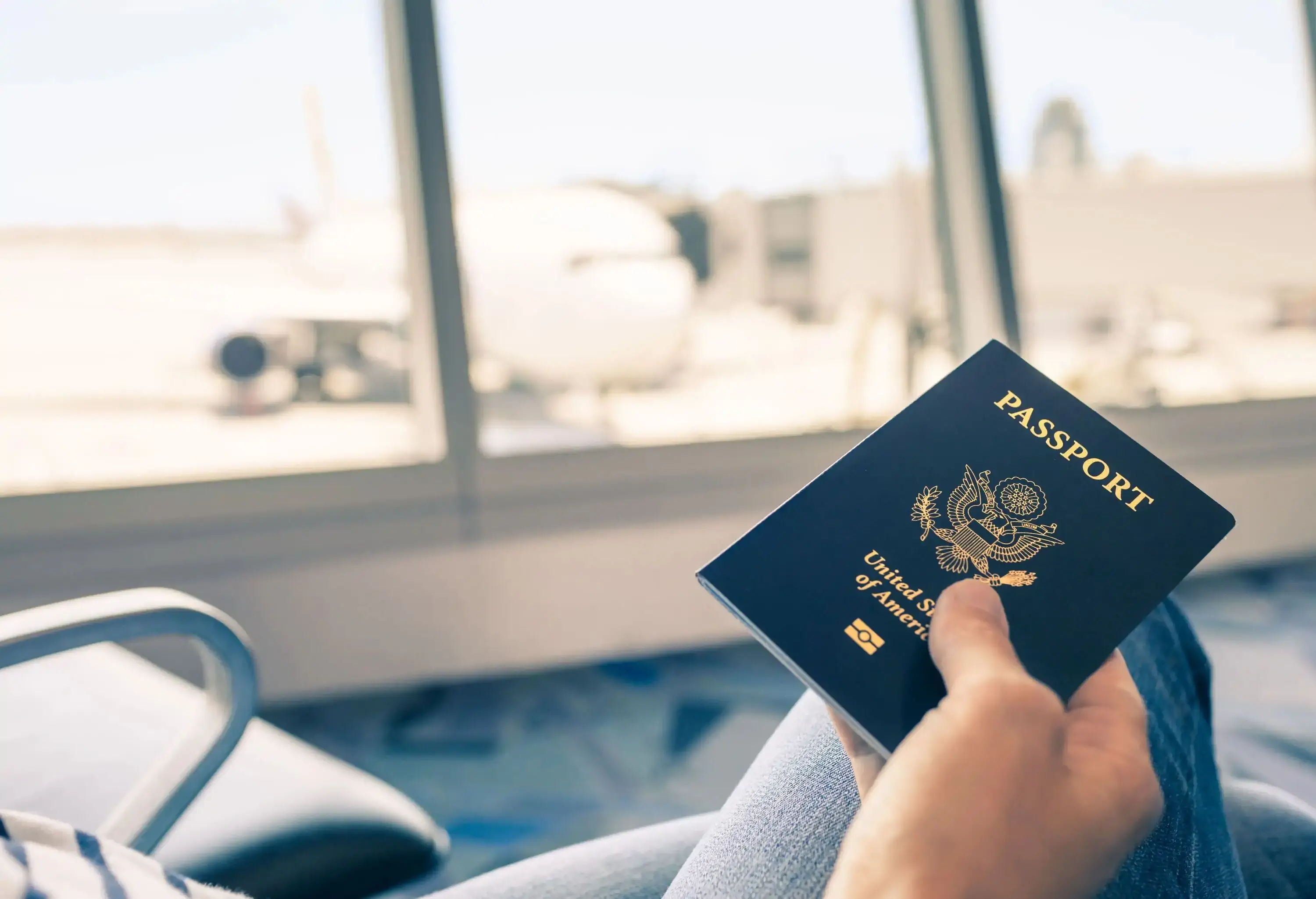You probably already know you need to have a passport to travel internationally. But what about biometric passports, also known as e-Passports? Even if you don’t know what they are, chances are you already have one. Most countries, including the United States, currently issue biometric passports. Here’s how it works and how it can be really handy for your next trip.
What is a biometric passport?

A biometric passport, also known as an e-Passport, is a passport book with an embedded computer chip that contains your personal data. The data matches the information found on your passport’s data page, including your photo.
What biometric data is stored on an e-Passport?
In the United States, e-Passports store your name, date of birth, and other personal data, including your passport photo. The image can be used with facial recognition technology, which identifies individuals based on their facial features. Some countries also include fingerprints in their e-Passport chips, and iris scans may be included, too.
Are biometric passports safe?
Yes, biometric passports are safe. US e-Passports have security features that prevent “skimming” a hacking technique for stealing data from magnetic stripes or data chips, such as the ones in biometric passports.
How do I know if I have an e-Passport?

All biometric passports have an international biometric symbol on the cover. This symbol, usually embossed in gold, is a horizontal rectangle with a circle in the middle. If your passport has this symbol on the cover, then you have a biometric passport.
Do I need a biometric passport?
For most international travel, you do not need a biometric passport. (You still need a passport in general, though!) But there are some exceptions. For example, to enter the United States under the Visa Waiver Program, you need an e-Passport. Always check the immigration policies of your destination country before traveling to ensure you have the proper documentation.
Even though biometric passports are not always necessary, they make international travel easier in many cases. Some international airports have automated border control systems, or electronic gates (e-gates). At e-gates, scanners use biometric technology to verify travelers’ identities and passport information. This is often faster than manual passport checks by humans, which means the lines can be shorter!
If you’re traveling through an airport that has e-gates, read the signage or ask an airport employee to ensure your passport is compatible with the e-gates. In some places, only certain countries’ passports — usually the most powerful passports — are permitted to use the e-gates.
How does a biometric passport work?
Biometric passports contain computer chips, which are usually located on the last page or within the cover. These chips can be read by electronic scanners at border crossings — this is usually much faster than a manual read by an immigration officer.
In the United States, if your chip malfunctions, you can still use your passport as a valid paper document. You just won’t be able to use an e-gate.
Which countries have a biometric passport?

According to the International Civil Aviation Organization, more than 140 countries and non-state entities like the European Union currently issue e-Passports. Some countries issue both biometric passports and “regular” paper passports.
Is there an e-Passport for the USA?
Yes, all US passports are biometric passports, or e-Passports. The only exception is emergency passports issued by a US Embassy or Consulate. Because these passports need to be issued fast, they are paper-only passports, not e-Passports.
When did the US start issuing biometric passports?
The United States started issuing biometric passports in 2006, and since 2007, all US passports are biometric. Since passports expire after 10 years, that means that all currently valid US passports (excluding emergency passports) are e-Passports.
How do I get an e-Passport?
In the US, all passports are e-Passports. Simply follow the standard passport application process, and you’ll receive a biometric passport. If you’re applying for a passport for the first time, you’ll need to bring your paperwork to an official acceptance facility. If you’re renewing a valid passport, you can do so online. And if your passport expires, you’ll have to start fresh as if you’re applying for the first time.
Will the passport become completely virtual?
The future of international travel may indeed be paperless. Some countries are testing travel with digital documents, in which travelers do not need to use their physical passports. Instead, their information would be attached to their smartphones — or perhaps even to their faces via facial recognition technology.
For instance, in the United States, the new Global Entry kiosks no longer require you to scan your passport for entry. Instead, the machines scan your face. It should be noted, however, that you do need a valid passport to apply for Global Entry, and you must still produce your passport at immigration if requested.
While we might be moving toward a paperless future in international travel, it will likely take quite some time to implement the technology worldwide. So, for now, make sure you have a biometric passport!







